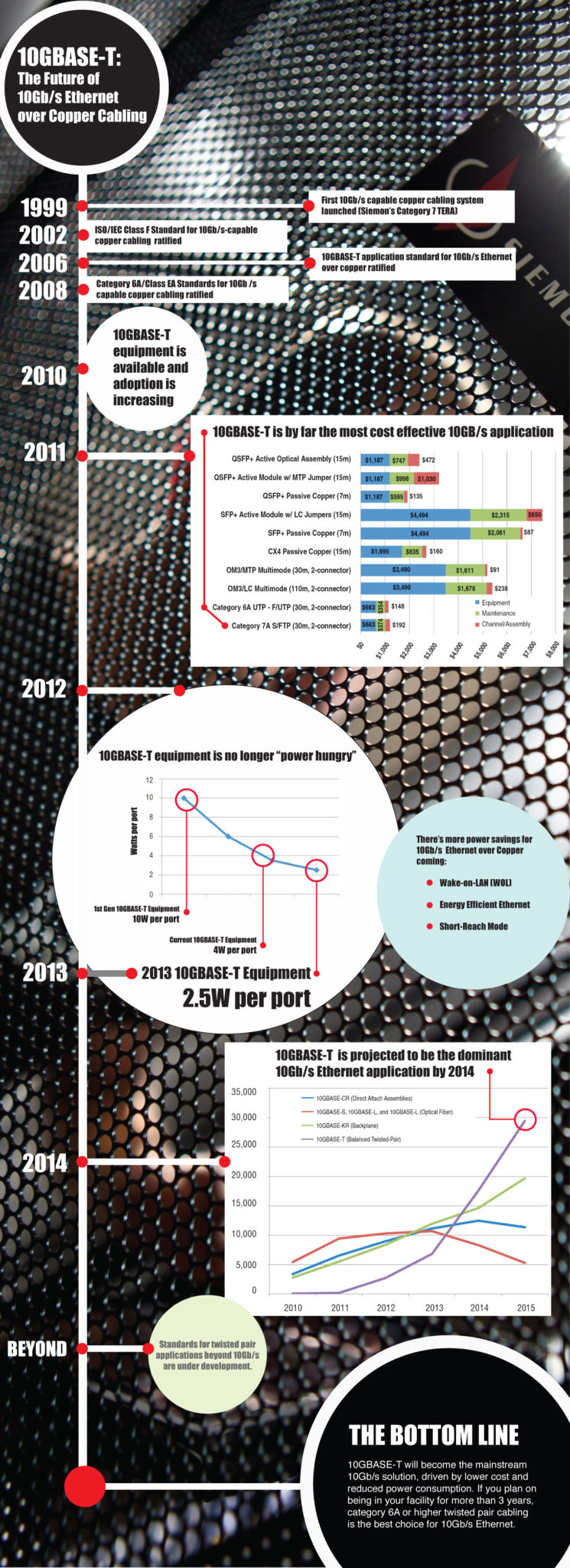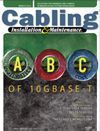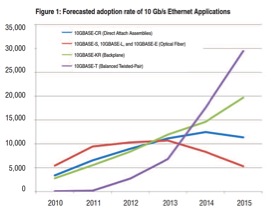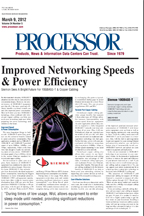10GBASE-T: The Future of 10Gb/s Ethernet [INFOGRAPHIC]
In this Infographic, we look at key points in the timeline of 10Gb/s copper cabling and the 10GBASE-T application standard. From early cabling options to current and future developments, it shows 10GBASE-T and twisted-pair copper cabling’s projected rise to 10Gb/s Ethernet dominance.
To learn more about 10Gb/s copper cabling, check out the whitepaper “State of the Network: 10GBASE-T Equipment Availability and the Future of Copper Media“.




